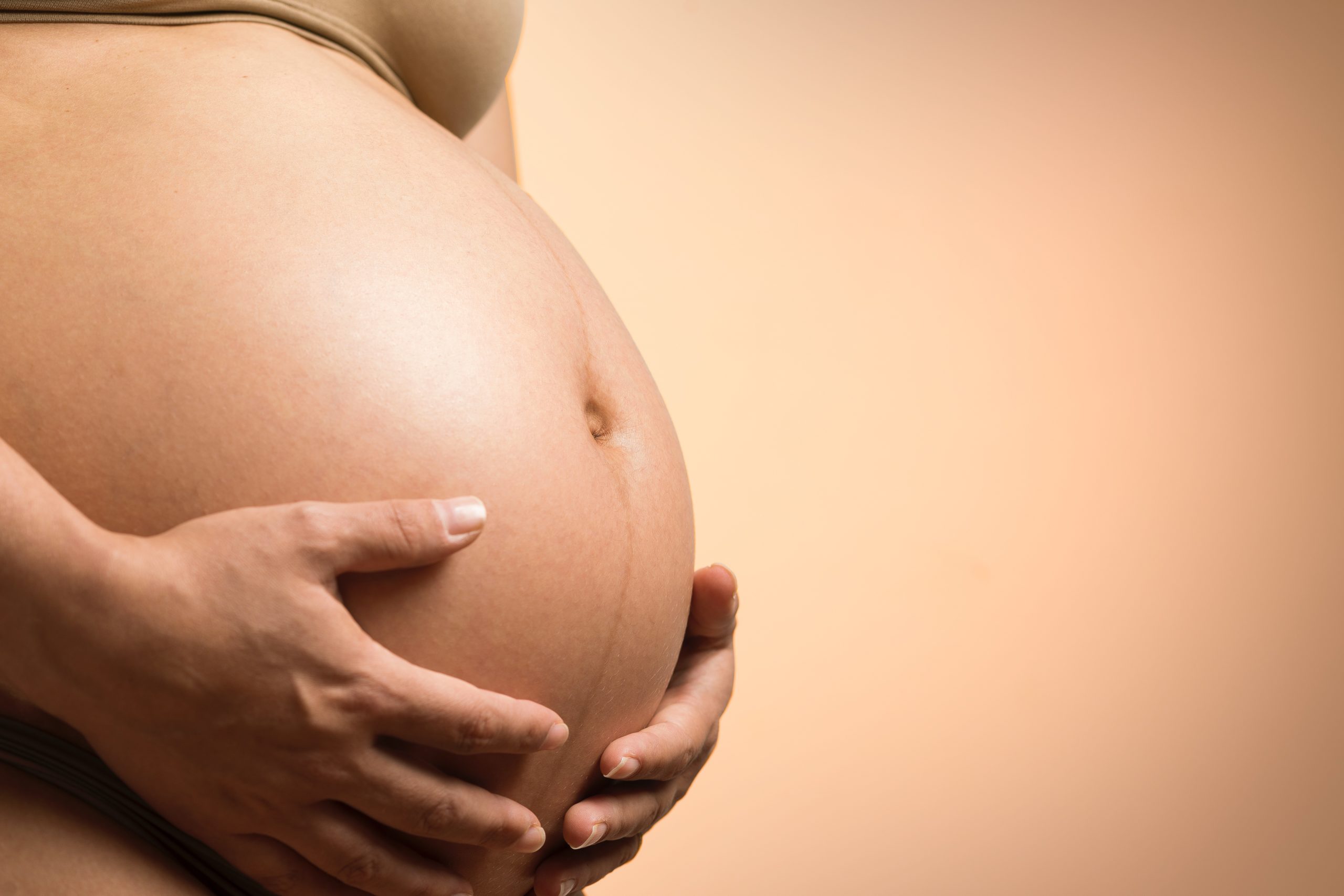¿CÓMO SE PUEDE ALTERAR TU EMBARAZO?

¿CÓMO SE PUEDE ALTERAR TU EMBARAZO?
Tabla de contenidos
¿CÓMO SE PUEDE ALTERAR TU EMBARAZO?
¿CÓMO SE PUEDE ALTERAR TU EMBARAZO?
El embarazo es un momento muy delicado de nuestra etapa vital. Este viene marcado por nuevas funciones que ha de desempeñar nuestro organismo, nuevos tejidos que se irán formando y nuevas señales que se irán enviando para que todo vaya siguiendo su curso a la perfección.
Unas de las moléculas más importantes implicadas en la señalización celular son las hormonas. Las hormonas son las encargadas de orquestar el proceso de embarazo, es decir, de enviar las señales en cada momento preciso para que se lleven a cabo una serie de funciones que van a ir marcando el desarrollo de la vida de nuestro bebé. Por ello, las hormonas y su correcto funcionamiento son vitales para que nuestro embarazo llegue a término satisfactoriamente.
Así mismo, nuestro mundo está lleno de moléculas que pueden no ser beneficiosas para nuestro embarazo y la vida de nuestro bebé, las cuales inhalamos, ingerimos o absorbemos a través de la piel. Nos referimos a las partículas presentes en la contaminación o en productos agrícolas o de jardín, a ambientadores, a aditivos alimenticios y a moléculas cosméticas. Unas de estas moléculas dañinas son los disruptores endocrinos (DE). Estos compuestos, como su nombre indica, pueden alterar nuestro sistema hormonal, no dejando que lleven a cabo su función o señalización adecuadamente, llegando así a acarrear consecuencias graves [1,2].
Los disruptores endocrinos
La lista de estas sustancias es muy extensa. La Organización Mundial de la Salud (OMS) publicó un informe en el 2012, en donde decía que existen aproximadamente 800 compuestos orgánicos sospechosos de actuar como DE [1]. En la cosmética, hay una lista con 28 sustancias para su evaluación por su posibilidad de actuar como DE y de varias de ellas ya se tiene el informe de seguridad, concluyendo que no son seguras a las concentraciones que se usan.
Un problema importante con el que nos encontramos es que estas moléculas acceden a nuestro organismo y se acumulan en él, muchas veces de manera irreversible y pasan de una generación a otra [3,4]. Además, actúan con efecto Cocktail, es decir, su efecto es mayor en conjunto; y llevan a cabo su acción a concentraciones extremadamente pequeñas.
El efecto de los disruptores endocrinos en el embarazo
Los DE han sido extensamente relacionados con procesos de infertilidad [1,2]. Se observa una asociación de estas moléculas con una baja calidad seminal, una disminución de la testosterona, e incluso una mayor fragmentación en el ADN espermático [5,6,7]. También se han observado en mujeres desbalances hormonales, alteraciones en el ciclo menstrual y malformaciones genitales [8,9]. Como vemos, ya durante la búsqueda del embarazo, debemos tener precaución y evitar la exposición a estas moléculas.
¿Y qué sucede en el embarazo? Como ya hemos dicho, el embarazo viene orquestado por las hormonas, y cualquier molécula que perturbe el sistema endocrino puede alterar el proceso de gestación[10].
Son varias las investigaciones que han demostrado que los disruptores endocrinos se asocian a diferentes complicaciones en el embarazo
La hipertensión y la preeclampsia durante el embarazo son la complicación más frecuente, preocupante y temida en este momento, ya que, en los casos graves se pone en juego la vida del feto y de la madre. En los casos moderados puede dar lugar al desprendimiento de la placenta, nacimientos pretérmino o retardo en el crecimiento del feto. Pues bien, se ha demostrado que ciertos EDCs son causantes de la aparición de estas alteraciones hipertensivas [11].
Los EDCs también se han visto asociados con la aparición de la diabetes mellitus gestacional [12]. La diabetes gestacional es una de las alteraciones más comunes durante la gestación, pudiendo aparecer hasta en el 25 % de las futuras mamás. Esta complicación tiene efectos dramáticos para el feto, ya que puede desarrollar macrosomía, hipoglucemia, alteraciones metabólicas, distress respiratorio o diabetes tipo 2 tras nacer; la madre también será más propensa a tener hipertensión, preeclampsia o tener un parto por cesárea.
Los EDCs también aumentan el riesgo de que el bebé nazca antes de tiempo [13,14]. Los nacimientos prematuros llevan consigo una serie de complicaciones a corto plazo: cardiovasculares, inmunológicas, respiratorias, neurológicas, etc; ya que sus organitos todavía siguen en desarrollo. En los casos más severos, estas alteraciones tienen alcance a largo plazo, pudiendo ocasionar una parálisis cerebral, dificultades en el aprendizaje, problemas en la visión, audición, dentales, psicológicos y de salud crónicos.
Y lo que puede ser aún más grave es que ciertos EDCs aumentan hasta 3 veces el riesgo de aborto [15]. La incidencia de los abortos espontáneos está entre el 10 y el 20 % de las embarazadas, y es el mayor miedo que se tiene tras ver que el test de embarazo ha dado positivo.
Los disruptores endocrinos aumentan hasta 3 veces el riesgo de aborto
Como podemos comprobar, existen sustancias en el exposoma, donde incluimos los productos cosméticos, que pueden perjudicar nuestro embarazo. Debemos por ello, ser conscientes, prevenir, tener precaución y evitar exponernos a ellas, utilizando productos diseñados cuidadosamente, respetuosos y responsables con la maternidad, como son los productos de nuestra marca Mamanecó.
Bibliografía
-
- WHO: World Health Organization. Global Assessment of the State of the Science of Endocrine
Disruptors. 2012. - CHE: Collaborative on Health and the Environment. Toxicant and Disease Database. Pesticides.
- Lopez-Espinosa MJ, Granada A, Carreno J, Salvatierra M, Olea-Serrano F, Olea N. Organochlorine pesticides in placentas from Southern Spain and some related factors. Placenta. 2007 Jul;28(7):631-8.
- Carreño J, Rivas A, Granada A, Jose Lopez-Espinosa M, Mariscal M, Olea N, Olea-Serrano F. Exposure of young men to organochlorine pesticides in Southern Spain. Environ Res. 2007 Jan;103(1):55-61.
- Anway, M. D., Cupp, A. S., Uzumcu, M., & Skinner, M. K. Epigenetic transgenerational actions of
endocrine disruptors and male fertility. Science 2005; 308(5727): 1466-1469. - Hauser R. Urinary phthalate metabolites and semen quality: a review of a potential biomarker of susceptibility. Int J Androl. 2008 Apr;31(2):112-7.
- Meeker JD, Yang T, Ye X, Calafat AM, Hauser R. Urinary concentrations of parabens and serumhormone levels, semen quality parameters, and sperm DNA damage. Environ Health Perspect. 2011Feb;119(2):252-7.
- Hruska, K.S., et al., Environmental Factors in Infertility. Clin Obstet Gynecol, 2000. 43(4): p. 821-829.
- Sharara, F.I.et al. Environmental toxicants and female reproduction. Fertil Steril, 1998. 70(4): p. 613-22.
- Paulesu L, Rao CV, Ietta F, Pietropolli A, Ticconi C. hCG and Its Disruption by Environmental Contaminants during Human Pregnancy. Int J Mol Sci. 2018 Mar 20;19(3):914. doi: 10.3390/ijms19030914. PMID: 29558393; PMCID: PMC5877775.
- Hirke A, Varghese B, Varade S, Adela R. Exposure to endocrine-disrupting chemicals and risk of gestational hypertension and preeclampsia: A systematic review and meta-analysis. Environ Pollut. 2022.
- Yan, D., Jiao, Y., Yan, H., Liu, T., Yan, H., & Yuan, J. (2022). Endocrine-disrupting chemicals and the risk of gestational diabetes mellitus: a systematic review and meta-analysis. Environmental Health, 21(1), 1-24.
- Wang X, Wang LL, Tian YK, Xiong SM, Liu YJ, Zhang HN, Shen XB, Zhou YZ. Association between exposures to phthalate metabolites and preterm birth and spontaneous preterm birth: A systematic review and meta-analysis. Reprod Toxicol. 2022 Oct;113:1-9.
- Yuhao Wu, Junke Wang, Yuexin Wei, Jiadong Chen, Lian Kang, Chunlan Long, Shengde Wu, Lianju Shen, Guanghui Wei. Maternal exposure to endocrine disrupting chemicals (EDCs) and preterm birth: A systematic review, meta-analysis, and meta-regression análisis. Environmental Pollution. Volume 292, Part A. 2022.
- Wang X, He C, et al. Maternal urine phthalate metabolite exposure and miscarriage risk: a nested case-control study of the Zunyi Birth Cohort. Environ Sci Pollut Res Int. 2022 Nov 1.
- WHO: World Health Organization. Global Assessment of the State of the Science of Endocrine

Detrás de Mamanecó hay un corazón apasionado por lo que hace y una mente inquieta que con su lluvia de ideas creó lo que ahora estáis viendo…
Doctora en Bioquímica y una fan de la ciencia y del saber.



